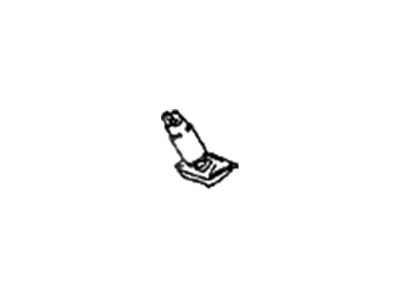If you suspect insufficient fuel delivery, first inspect all fuel lines to rule out any leaks. In the case of carbureted models with a mechanical fuel pump, start by removing the air cleaner and locating the fuel pump on the rear side of the cylinder head. Check for fuel or oil leakage from the breather hole; if present, the pump may be defective. To perform a fuel pump output check, connect a remote starter switch, or with an assistant's help, detach the fuel outlet hose from the carburetor and direct it into a container while cranking the engine. If fuel is emitted in spurts, the pump is operating properly. For carbureted models, also check the vacuum by attaching a vacuum gauge to the fuel pump's inlet fitting while cranking the engine. If the vacuum is steady, the pump's inlet valve is working. In the case of fuel-injected models with an electric fuel pump, perform a preliminary check by listening for the pump's sound when the ignition key is turned on. If the pump doesn't operate, use a fused jumper wire to apply battery voltage to the fuel pump test connector. If the pump still doesn't work, replace it. For fuel pressure checks, use specialized fuel pressure gauges and adapters. On 1990 through 1999 models, relieve fuel system pressure, disconnect the fuel hose, and install a gauge. Check for leaks and record the fuel pressure reading. On 2000 through 2011 models, tee into the fuel system between the fuel supply line and fuel rail using a special adapter and gauge. On 2012 and later models, relieve fuel pressure, insert a special adapter in the fuel supply line, and connect a pressure gauge. Compare the indicated fuel pressure readings with specifications. After testing, relieve system fuel pressure, reconnect the battery terminal cable, and start the engine while checking for fuel leaks.
Posted by HyundaiPartsDeal Specialist 









